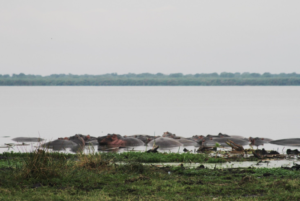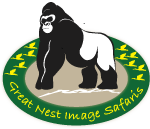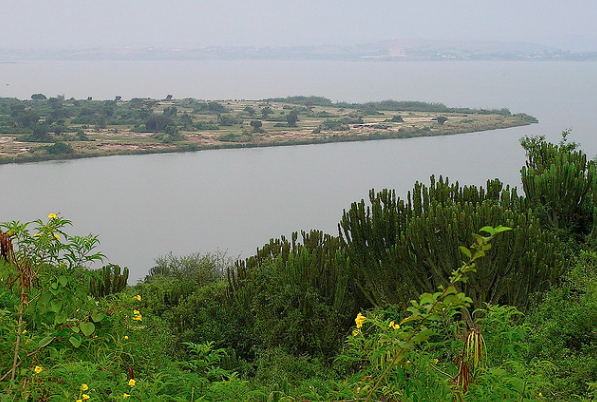Uganda’s Lake George
Uganda’s Lake George : also known as Lake Dweru is within Queen Elizabeth National Park located in the western part of Uganda in Kasese district. It is also part of Africa’s Great Lakes system although not it’s self-considered one of the Great Lakes. The magnificent lake drains to Lake Edward through the mighty Kazinga Channel. In addition, the channel beautifully meanders in 915 meters streaming with lots of wildlife at the shores and concentrated by hippos in the inner waters. Like other lakes in the region, it was named after a member of the British royal family “Prince George” who later became King George V of the United Kingdom.
Facts about Lake George
 Besides, Lake George has got some islands recorded such as Kankuranga, Irangara as well as Akika. Its inflows include; Dura, Mpanga, Nsonge, Rumi, Katonga and Mubuku from Rwenzori. The lake possesses its major catchment area within the Rwenzori ranges and the northeastern agricultural area. Initially, the Lake was designated as a Ramsar Wetland System on 4th of March 1988 and was given the name George. It was named by the first European explorer Henry M Stanley who visited it in 1875, after following the course of the Katonga River from Lake Victoria. Henry M Stanley named this lake “Beatrice gulf” thinking it was part of Lake Albert.
Besides, Lake George has got some islands recorded such as Kankuranga, Irangara as well as Akika. Its inflows include; Dura, Mpanga, Nsonge, Rumi, Katonga and Mubuku from Rwenzori. The lake possesses its major catchment area within the Rwenzori ranges and the northeastern agricultural area. Initially, the Lake was designated as a Ramsar Wetland System on 4th of March 1988 and was given the name George. It was named by the first European explorer Henry M Stanley who visited it in 1875, after following the course of the Katonga River from Lake Victoria. Henry M Stanley named this lake “Beatrice gulf” thinking it was part of Lake Albert.
 Later, he renamed it “George” on his return in 1888 after realizing they were two independent lakes. The fauna of this beautiful lake is majorly dominated by different herbivores. These include; fish species such as the Cyclopoid thermocyclops hyalinus, Tilapia nilotica, and Haplochromis nigripinnis. The bordering papyrus swamps of the Ramsar wetland area are also habitat to the sitatunga antelope and other animals. In addition, one can see the hard to pin down shoebill and other resident and migratory birds along the lake.
Later, he renamed it “George” on his return in 1888 after realizing they were two independent lakes. The fauna of this beautiful lake is majorly dominated by different herbivores. These include; fish species such as the Cyclopoid thermocyclops hyalinus, Tilapia nilotica, and Haplochromis nigripinnis. The bordering papyrus swamps of the Ramsar wetland area are also habitat to the sitatunga antelope and other animals. In addition, one can see the hard to pin down shoebill and other resident and migratory birds along the lake.
What to do at and around the Lake
Birding
Lake George is a birders paradise in Queen Elizabeth National Park, which boasts with over 600 bird species. The birds seen here include; African fish eagle, marabou storks, grey-headed kingfishers, swamp nightjar, Nubian woodpeckers, etc.
Wildlife viewing
This is down near the lake with views of the sitatunga antelope at the papyrus swamp of the northern shores of the lake. Other animals seen include; hippos, elephants, Nile crocodiles, and Uganda kobs that roam the shores of the Lake. Besides, animals such as warthogs, waterbucks, buffaloes, elands and duikers are usually spotted grazing around the shores.
Fishing
While here, you will get a chance to join the fishermen where you will be taught some fishing tactics. You can even take your best catch that will be prepared for you to enjoy at your lodge.
Canoeing
Tourists hop on a traditional canoe to explore the beauty as well as discover the history of this shallow lake. It also provides you great opportunities of viewing aquatic birds and animals plus indigenous flora and fauna. During this activity, also expect to explore the islands and the fish breeding areas.
Guided nature walks
These are done around the papyrus wetlands and they introduce tourists to different bird species that call this place a home. You will also get a chance to see how fine traditional souvenirs such as baskets and ropes are weaved.
Community visits
You will join the Kasuga community experience that will usher you to the lifestyle of the people living around the lake. In addition, you will enjoy their different activities such demonstration of traditional beer brewing, traditional canoe making, canoe regatta, etc. Besides, you will also get a chance to interact with the local fishermen, and learn about the different fishing methods used. Besides, there are lots of souvenirs to buy and take back home for remembrance.
Best time to visit the lake
The place experiences both dry and wet seasons with the latter ranging from March to May as well as October and November. In fact, these months are perfect for spotting migratory bird species, however, the lake can be visited all year round.








Leave a Reply
Want to join the discussion?Feel free to contribute!